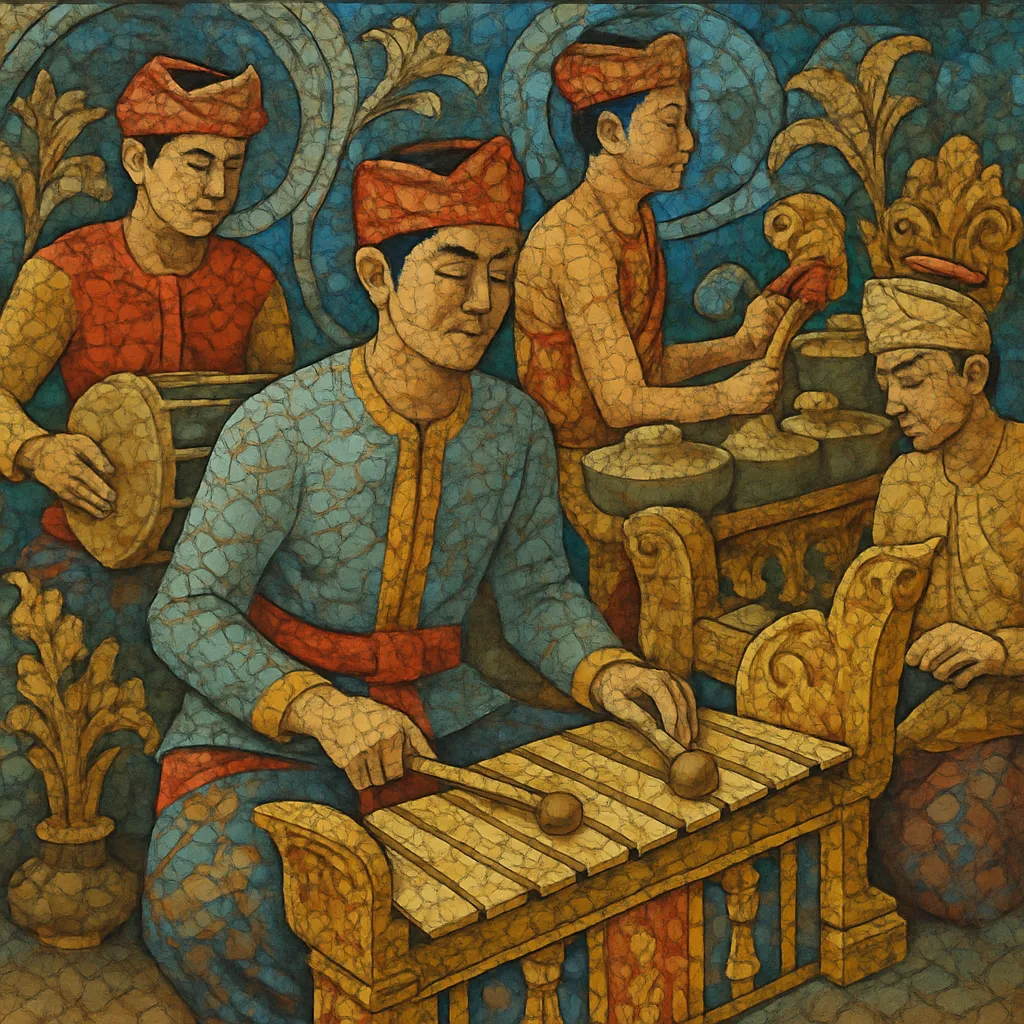Balinese gamelan is the vibrant, bronze-percussion ensemble tradition of Bali, Indonesia, known for brilliant timbres, explosive dynamics, and agile interlocking rhythms.
It is performed by community-based ensembles (sekaa), often to accompany temple rituals, dance-drama, and shadow puppetry, but it also thrives as a concert art.
Its sound-world centers on metallophones (gangsa), kettle-gongs (reyong/trompong), large hanging gongs (gong ageng, kempur), hand drums (kendang), and cymbals (ceng-ceng), with bamboo flutes (suling) and occasional fiddle (rebab).
Paired tuning (ombak) creates a deliberate “shimmer” through slightly detuned instrument pairs, while interlocking parts (kotekan) generate dazzling, motoric textures. Modal practice draws on five- and seven-tone collections with named modes (e.g., selisir, tembung), articulated through cyclical gong structures (gongan).
Balinese gamelan took shape after the fall of the Javanese Majapahit kingdom in the late 1400s, when musicians and artisans migrated to Bali. There, the island’s Hindu-Balinese ritual life and court culture fostered distinct ensembles (e.g., semar pegulingan, gambuh) and repertoires. Bronze casting and localized tuning practices crystallized an independent Balinese aesthetic—brighter, more incisive, and often more virtuosic than its Javanese relatives.
By the early modern period, gamelan ensembles became embedded in village and temple life. Ensembles performed for odalan (temple anniversaries), cremation ceremonies, processions (beleganjur), and dance-dramas (legong, gambuh, wayang kulit). Repertoire linked music to cosmology and communal identity, while guild-like sekaa maintained instruments, trained players, and transmitted style orally.
Around the 1910s in North Bali (Buleleng/Jagaraga), gong kebyar emerged with explosive dynamics, abrupt tempo changes, and dense interlocking textures. This modern style spread rapidly, reshaping Balinese musical life. Composers such as I Wayan Lotring helped define idioms—angular melodies, virtuosic reyong passages, and dramatic cueing (angsel)—that became hallmarks of Balinese sound.
Scholars and composers (notably Colin McPhee) documented and arranged Balinese pieces, catalyzing interest among Western modernists and later minimalists. Post–World War II festivals, conservatories (KOKAR/ISI Denpasar), and tours professionalized training and expanded the repertoire. Contemporary composer-performers (e.g., I Nyoman Windha, I Gede Asnawa) write new works that honor tradition while exploring fresh textures, collaborations, and staged productions.
Balinese gamelan remains a living, community-driven art, central to ritual yet fully at home on international stages. Ensembles range from processional beleganjur to virtuosic gong kebyar and intimate gender wayang, each expressing the island’s distinctive balance of power, intricacy, and brilliance.
-
•
Choose ensemble type (e.g., gong kebyar, beleganjur, gender wayang) and mode.
•Sketch a pokok (core melody) in medium register.
•Orchestrate pokok to jublag/jegogan; assign ugal to lead and cue.
•Design kotekan layers (polos/sangsih) for kantilan/pemade—begin with simple polos and add off-beat sangsih to create drive.
•Place structural gongs (gong, kempur) to articulate phrases; add ceng-ceng accents near cadences.
•Write drum cues (kendang) that signal transitions, dynamic swells, and angsel breaks.
•Refine dynamics and tempo shifts (sudden crescendi/decrescendi and accelerandi) to shape drama.


